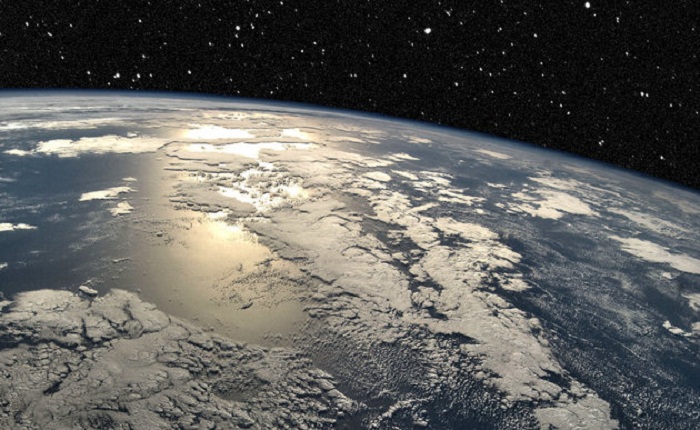While some scientists believe water was delivered by icy space rocks smashing into the planet after it was formed, others have argued that water has been on Earth since its formation -- and new research indicates they might be right.
An international team of scientists has found new evidence that water may have been a fundamental part of Earth since its beginning some 4.5 billion years ago.
"Our data suggest that the majority of Earth`s water was sourced from water molecules stuck to the surface of dust particles," Dr. Lydia Hallis, the earth scientist at the University of Glasgowin Scotland who led the research, told The Huffington Post. "These dust particles eventually accreted together to form the Earth. So the planet`s water was brought in during Earth`s initial formation."
For the study, which was published Friday in the journal Science, researchers examined volcanic rocks from Baffin Island off the Canadian coast and Icelandic lava. They noted that the rocks were from ancient sources beneath Earth`s surface and have remained untouched since the planet`s formation.
Using an advanced instrument called an ion microprobe, scientists took a close look inside the rocks to detect any chemical traces of early water, including its hydrogen composition.
In addition to finding such traces, they determined that the water`s chemical composition had very little of a hydrogen isotope called deuterium, which is sometimes called "heavy hydrogen." Deuterium can be linked to different planetary bodies in space, but the amount found in the water suggests that it was not carried to Earth from elsewhere.
"We have to look at the fingerprints both in space, for all the starting materials, and on Earth," Dr. Karen Meech, an astronomer at the University of Hawaii and a co-author of the research, told the Christian Science Monitor. "[Then], like a detective, compare the two to see what the best sources are."
The researchers concluded that water molecules must have been a part of the dust surrounding the sun in our solar system that accumulated to help form our planet -- and around 20 percent of the water studied may have existed when Earth was formed, Nature magazine reported.
"If Earth formed with its water from the very beginning ... there is no reason to assume that the other planets and rocky bodies in our solar system, and possibly in other solar systems, didn`t form in the same way," Hallis said.
"If this is the case, we would expect that these rocky bodies would also be water rich," she said. "Thus our research indicates that finding `blue planets` around other stars may be more likely than we previously thought."
The researchers hope their findings may be used to help astronomers find and better understand these other planets in the universe that may be watery.
"What I think is neat about the story of the origin of Earth’s water is if it required some sort of special architecture within our solar system, some special arrangement of all the planetesimals, or migration of the planets to get water to Earth," Meech told Discovery News.
If so, that has "huge implications for the thousands of extrasolar planets that have been discovered," she said. "Maybe just being at the right distance from your star is not good enough to get the ingredients for life, namely water."
More about:
















































